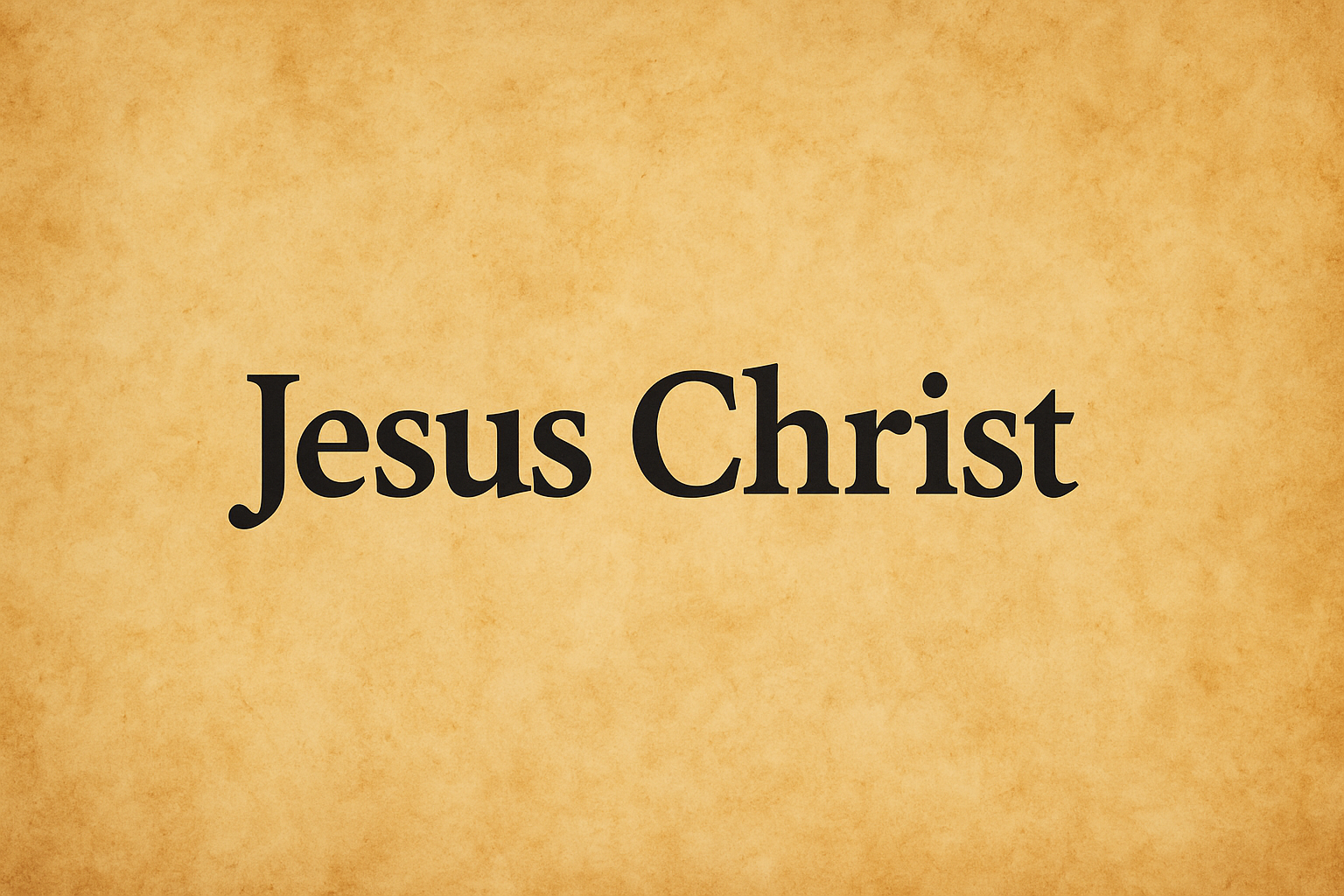The Bible’s Answer
One of the strangest events in the Bible occurs at the start of the four Gospel accounts. Namely: the Lord Jesus Christ chooses to get baptised by John the Baptist in the Jordan River. The reason why this is so strange is that Jesus never committed a single sin while on Earth (1 Peter 2:21–22), and yet John’s baptism was a “baptism of repentance for the forgiveness of sins” (Mark 1:4; Luke 3:3). Indeed, the only people John baptised were sinners, who came to him confessing their sins (Mark 1:5). John himself said:
11 “I baptize you with water for repentance, but he who is coming after me is mightier than I, whose sandals I am not worthy to carry. He will baptize you with the Holy Spirit and fire. 12 His winnowing fork is in his hand, and he will clear his threshing floor and gather his wheat into the barn, but the chaff he will burn with unquenchable fire.” (Matthew 3:11–12)
Jesus never had any sins to repent of, since he was (and is) sinless. John acknowledges this when he says that he is unworthy to even carry Jesus’ sandals, because of how holy and righteous Jesus is (Hebrews 7:26). So, when Jesus comes to John to be baptised, John is shocked, and says it should be the other way around. We read:
13 Then Jesus came from Galilee to the Jordan to John, to be baptized by him. 14 John would have prevented him, saying, “I need to be baptized by you, and do you come to me?” 15 But Jesus answered him, “Let it be so now, for thus it is fitting for us to fulfil all righteousness.” Then he consented. (Matthew 3:13–15)
Jesus’ answer to John, and what happens during and after his baptism, helps us to understand why, even though Jesus is the sinless and eternal Son of God, he chose to get baptised.
Jesus’ Baptism: Affirmation and Consecration
First, by getting baptised by John, Jesus was publicly affirming John’s message and ministry, and thus gave his approval to John as a true prophet. John proclaimed a baptism of repentance (Luke 3:7–8) to prepare the way for Jesus (Luke 3:4; John 1:31). Jesus got baptised by John to set an example for others to follow; to highlight John’s message of the need for all people to repent and prepare to receive the salvation that Jesus was bringing.
Second, by getting baptised by John, Jesus was consecrated (set apart for service) by God and anointed by the Holy Spirit for his ministry on Earth as the Messiah (the Anointed One) who would save the world. This is seen during Jesus’ baptism, when the Holy Spirit descends on him, and the Father approves of Jesus, his Beloved Son:
16 And when Jesus was baptized, immediately he went up from the water, and behold, the heavens were opened to him, and he saw the Spirit of God descending like a dove and coming to rest on him; 17 and behold, a voice from heaven said, “This is my beloved Son, with whom I am well pleased.” (Matthew 3:16–17)
From this moment on, Jesus begins his ministry (Matthew 4:17). So, Jesus’ baptism was a rite of initiation, a divine anointing for divine service.
Jesus’ Baptism: Taking Our Place
Third, Jesus himself said to John, “it is fitting for us to fulfil all righteousness” (Matthew 3:15). How was Jesus getting baptised part of “fulfilling all righteousness”? We noted before that Jesus’ baptism formally set him apart for ministry, and what did Jesus’ ministry involve? Taking our place as our substitute.
Jesus got baptised because people ought to get baptised. In the same way, Jesus fulfilled God’s Law because people should have upheld the Law (Matthew 5:17), and Jesus died for our sins (not his own), because people must die for their sins (Matthew 20:28; Romans 6:23).
Living a Truly Human Life for Us
Jesus did not have to do any of this. But Jesus did all this on our behalf, as our substitute. By getting baptised in the presence of sinners who were also getting baptised, Jesus stood in solidarity with sinful humanity as our friend and ally. He completely identified himself with our sins and failures, despite being sinless, and did this as part of living a truly human life for our sake. God calls all people to get baptised, therefore Jesus submitted to this command also.
Bearing Our Sins; Fulfilling the Law; Dying for Us
As the people of Israel symbolically placed their sins upon unblemished lambs in Old Covenant temple worship, and sacrificed them for atonement, Jesus is the Lamb of God, who takes away the sin of the whole world (John 1:29). In getting baptised, Jesus began his ministry of taking our sins upon himself (not symbolically, but actually), and making atonement once and for all by his sacrifice on the cross (Hebrews 10:10–14).
By fulfilling God’s Law, Jesus fulfilled the righteous requirement of the Law on our behalf, which we failed to fulfil by sinning. By dying for our sins, Jesus paid our sin penalty in its fullness as our substitute.
Righteousness Satisfied
Righteousness demands that sinners repent (in those days, by submitting to John’s baptism), follow God’s Law, and that sinners get punished for breaking it. By getting baptised, fulfilling the Law, and dying for our sins, Jesus therefore fulfilled all righteousness. The Apostle Paul sums this up in the following passage:
For our sake he made him to be sin who knew no sin, so that in him we might become the righteousness of God. (2 Corinthians 5:21)
Jesus became “sin”, because he bore the sins of the world in his body on the cross (1 Peter 2:24). In Jesus (that is, through faith in him), we become the righteousness of God, because we are clothed with Christ’s righteousness (Galatians 3:27). A great exchange happens: on the cross, Jesus receives our sins; through faith, we receive Jesus’ righteousness.
In sum, the third reason for why Jesus got baptised was to become our substitute. Jesus got baptised to begin his ministry of taking upon himself the sins of the world, and as the Lamb of God who dies in our place the death we deserved.
For Jesus, We Were Worth the Shame of His Baptism
The striking thing about Jesus’ baptism is the embarrassment and shame associated with it. Thousands of sinners were going to John to be baptised by him. Such a thing is hardly fitting for the holy and sinless Messiah himself, Jesus. And yet, despite this, Jesus got baptised in the presence of many witnesses. To them, Jesus would have looked like “just another sinner”, even though that could not have been further from the truth.
Why did Jesus do this? Why did he go through the shame and embarrassment of getting baptised and looking like just another sinner, though he was not? He did it for our sake. In getting baptised, Jesus began his ministry of taking upon himself the sins of the whole world, which reached its culmination on the cross, Jesus’ baptism of suffering and fire (Luke 12:50), where Jesus was crucified between two criminals and made to look like one himself (Luke 23:33–34). The book of Hebrews says:
1 Therefore, since we are surrounded by so great a cloud of witnesses, let us also lay aside every weight, and sin which clings so closely, and let us run with endurance the race that is set before us, 2 looking to Jesus, the founder and perfecter of our faith, who for the joy that was set before him endured the cross, despising the shame, and is seated at the right hand of the throne of God. (Hebrews 12:1–2)
Jesus endured the shame of the cross for the joy that was set before him. What was the joy set before him? It’s you and I. For Jesus, you were worth the shameful, embarrassing public image he gained from his baptism, of looking like a sinner though he was not. For Jesus, you were worth him suffering and dying by being nailed to a wooden cross between two criminals in public humiliation. For Jesus, you were worth him carrying all the sins of the entire world in his body on the cross and bearing the full wrath of God the Father against sin—a sacrifice more difficult and painful than anything we could possibly imagine.
To him who loves us and has freed us from our sins by his blood and made us a kingdom, priests to his God and Father, to him be glory and dominion forever and ever. Amen. (Revelation 1:5–6)
Jesus Set the Pattern for Us to Follow
Jesus’ baptism sets a pattern for us to follow. We also are to get baptised, but not with John’s baptism. Jesus commands us to be baptised in the name of the Father, and of the Son, and of the Holy Spirit (Matthew 28:19–20) for the gift of the Holy Spirit and the forgiveness of our sins (Acts 2:38–39).
In Christian Baptism, God calls us to a new life of daily repentance and holy living, because we have died with Christ and been raised with him (Romans 6:3–5). Baptism connects us to the Lamb of God, our substitute who took away the sins of the entire world on the cross, so that in him, our sins are atoned for (Galatians 3:27).
Just as Jesus was opposed in his ministry, Christians who are baptised will also be opposed and unfairly treated for believing and upholding the truth of God’s Word (Luke 21:17). When this happens (whether by the world, or even unbelievers in the Church), we are sharing Christ’s sufferings according to Peter, and so we ought to rejoice, because it means the Holy Spirit is resting upon us (1 Peter 4:13–14).
When we face opposition, let’s remember Jesus, who didn’t care about what others thought of him, and got baptised anyway, because his perfect love for the will of God the Father took priority over his reputation. May God grant us this same mindset, that we may truly live as brothers and sisters of our Saviour, Jesus Christ, and thus give glory to God in Heaven (Matthew 12:49–50). Above all, let’s thank the Lord Jesus Christ for bearing the fullness of the dreadful consequences of our sins in his baptism of fire, so that through faith in him, we will never have to do this (Romans 8:1).
See Also






